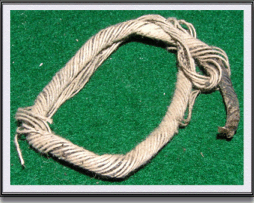
For centuries Cassiterite or tin-ore has been mined on Dartmoor. Often it was wet, cold and dangerous work and as the ‘Old Men’ of the moor began mining underground conditions worsened. It is not known how many tinners have perished down the mines but the numbers must be considerable. The following sad story illustrates not only the dangers of working in a tin mine but also the social attitudes prevailing at the time.
The Golden Dagger was a tin mine located in the Birch tor mining complex and it was here that in the February of 1882 a tragic accident occurred. The mine was owned and ‘captained’ (managed) by Moses Bawden who by all accounts operated the mine in accordance with the safety regulations of the time.
Many of his workers were employed on a ‘tribute’ or piece-work arrangement which meant that the quicker they worked the more they earned. The men would be paid by the ton of tin ore that they delivered to the surface and by far the fastest method of mining was ‘stoping’. The usual way was to take the ore from the roof of the ‘stope’ called ‘back stoping’ and work upwards. This meant that the loose material fell to the floor thus making it easier to remove and avoided the necessity of having to work around the debris.
The rock was blasted with gunpowder or ‘black powder’ as it was locally known. First a hole would be drilled in the rock and then filled with the required quantity of black powder and a length of detonation cord or safety fuse, the hole would then be tightly sealed with ‘wadding’ made from coarse decomposed granite. This would ensure that the full force of the blast went into the rock which would result in a more efficient shattering.
The problem with tribute work was that the miners tended to ‘cut corners’ in order to save time and work quicker. This from time to time included standard safety procedures and on one day in February 1882 this proved to be a costly mistake. Richard Stephens and John Webb were blasting rock in a stope. As was normal the hole was drilled then loaded with black powder and a safety fuse and then capped with a granite wadding. Written safety regulations clearly stated that when tamping the wadding a wooden ‘stemmer’ or tamping rod should be used. On this occasion Richard Stephens chose to ignore this advice and despite a warning from Webb, hit the butt end of the iron jumper that he had just used for drilling the hole with a mallet. Presumably this was done to save time or because he had done so before without any incident or maybe it was laziness either way the iron must have struck the granite and caused a spark which in turn ignited the black powder. The ensuing explosion shook the mine and Stephens caught the force of it in his face, it was reported that “his head was opened up so that his brains were exposed and eyes shockingly injured.”
It was clear that the miner needed urgent medical attention and so a man was dispatched to Moretonhampstead to summon a doctor. Three doctors were called upon and all refused to attend the patient. One doctor was expecting two women to give birth and another was expecting one birth but stated that either way he would not attend until his fee had been paid. The doctor at Chagford was also summoned but for what ever reason he didn’t show up.
Sadly Richard Stephens died from his injuries and three days later the inquest was held. The coroner’s verdict was that of Accidental Death and expressed a wish that important safety lessons should be learnt from the accident and hopefully it would act as a deterrent to others. He also berated the doctors especially for demanding a fee before attending such an emergency and also for not even showing up. Nobody will ever know if the man’s life could have been saved by prompt medical treatment.
James, 2004, pp77-78.
Very few people can truly know what harsh conditions the tin miners worked in especially in the early days. However a trip down an abandoned mine certainly gives one an inkling. They are cold, cramped, wet and very dark not to mention dangerous. Occasionally one comes across reminders of the ‘Old Men’ of the moor, one trip down an adit belonging to the Wheal Virgin Mine revealed an old candle wedged in a ball of clay along with a length of safety fuse.

Safety Fuse – Wheal Virgin.
Probably one of the more poignant reminders of the dangers of underground mines is when one comes a cross a ‘creaking timber’. These were wooden posts that were tightly wedged across a adit tunnel. The theory being that if there was any movement suggestive of a collapse then the post would creak as pressure was put on it thus giving short but prior warning of the impending danger.
Please note that nearly all of the old tin mine adits are in an extremely unstable and dangerous condition, most are flooded and it is not advisable to enter them unless with a recognised group.
Bibliography.
James, T. 2004 Bodies on the Moor, Orchard Pub. Chudleigh.
Anybody wishing to visit tin mining sites or learn more about their history will find the following link useful:
![]() The Dartmoor Tinworking Research Group.
The Dartmoor Tinworking Research Group.
 Legendary Dartmoor The many aspects past and present of Dartmoor
Legendary Dartmoor The many aspects past and present of Dartmoor
